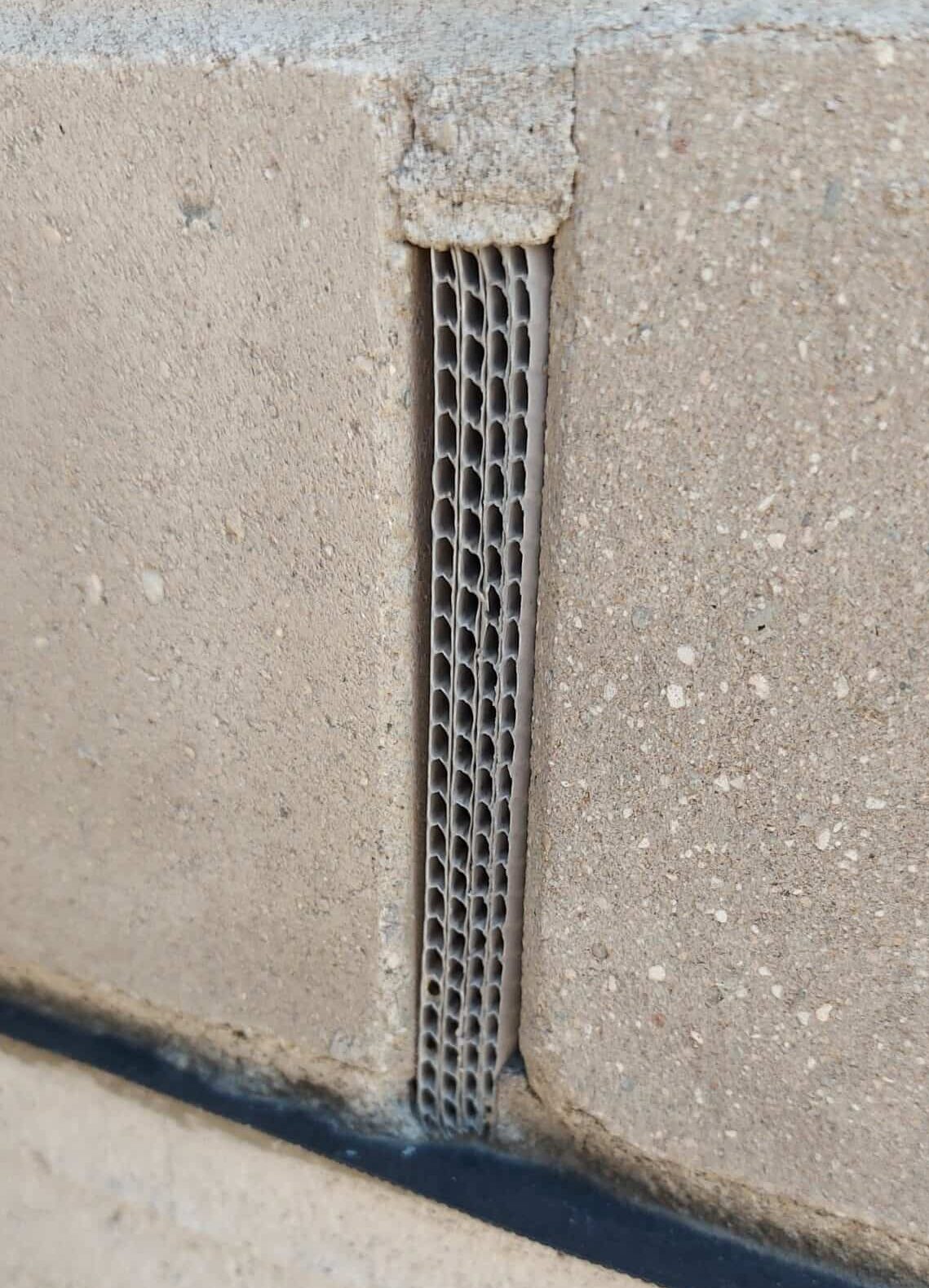You may have seen small gaps in the outer brick wall of your home and wonder if the builder simply forgot to fill it in or if there is something else going on…
It turns out that these gaps in the bricks are there by design for a good reason. They are called weep holes and serve a specific function.
Weep holes are missing sections of mortar that masons deliberately leave out to allow water to drain out and also for air flow from behind the bricks. They serve an important purpose in your home’s envelope and shouldn’t be completely covered up.
While in the past weep holes were left completely open, modern homes often have a small metal mesh installed (as the photo above shows) to prevent flying insects and other things from nesting and blocking it.
Below we’ll take a closer look at the purpose, design and reason for weeping holes and what you can and shouldn’t do with them.
What is the purpose of weep holes?
Weep holes serve two main purposes that are related:
Water drainage
People might be surprised to know how water and condensation gets behind the bricks. While modern bricks themselves are fairly resistant to water passing through, the same can’t be said for the mortar. and more specifically, where the brick and mortar meet.
Heavy and blowing rain and other moisture can get behind the bricks and it needs a place to escape. Otherwise it can lead to problems such as mold, rot or structural problems with the bricks themselves. This is especially true with wood frame homes, insulation, drywall, etc.
Water can cause erosion of your bricks. Freezing and thawing of water – should you live in a cold weather environment – can cause bricks to disintegrate over time. Bricks can absorb moisture from unwanted water so the weep holes enable it to escape instead.
Air flow
The weep holes provide venting as well as air flow for evaporated water to exit from behind the bricks of your home. Think of them as a design method that allows the brick wall to breathe.
Without weep holes, water would simply pool and sit. With air flow, it can help the water and moisture escape.
So while weep holes can allow water to actually drain from the cavity behind the bricks, it can also allow humid and moist air to escape, providing ventilation to the cavity even if no water is present.
Where are weep holes located?
Weep holes can be located in several places on the outer brick wall including vertically where mortar would normally be, above windows, doors or other places that water might need to escape from.
They are 3/8″ wide and depending on your local building code, may be located every 24″ to 36″ apart.
You can find weep holes installed in a variety of residential and commercial structures:
- Masonry walls on residential homes on the outside brick walls
- Retaining walls
- Underpasses
- Wing walls, which are smaller walls installed on larger walls i.e. small bridges, railway bridges.
Check your local area’s building code to see where they are legally required.
Is it ok to cover weep holes?
As the photo at the top of the page shows, newer buildings may install a small metal mesh (weep insert) in the gap where the mortar is missing. This allows water and air to flow but prevents wasps or other insects from flying in or building nests.
The mesh enables the weep hole to function as you want but prevents them from being infested or otherwise blocked.
What you don’t want to do is completely block the weep hole an prevents it from doing its job which is to allow water and air to pass through.
Why are there small holes in my wall?
It’s important to note that not all holes in your brick wall are weep holes. You might see very small pinhole type holes in your wall that aren’t weep holes but in fact something else.
While small holes in your brick wall might be a case of 5 year old me taking a hammer and nail and hammering into the side of my parent’s house to “make a home for the ants” (true story), it’s likely something very different.
It could be damage to the bricks and mortar from wear over time, harsh weather, etc.
It may also be small insects such as wasps or beetles.
They may also be holes that a previous home owner made for some reason i.e. drilling a hole for a cable, to attach something to the wall, etc.
A weep hole isn’t really a hole but a gap between bricks, where mortar was deliberately left out and is quite different from a hole(s) that might have been caused by something else.
Summary
Weep holes are vertical gaps between some of the bricks on the outside of your home. They look like the builder forgot to fill them but they are in fact by design. The holes are deliberate and exist to enable water to drain from the cavity behind the bricks and to promote air flow.
This prevents moisture and humid air from remaining in the cavity (open space) behind your brick wall which over time can damage your bricks and structure of your home.
While you can cover the weep holes with a metal mesh to prevent pests like wasps from nesting, you don’t want to fully cover the holes to prevent its stated purpose which is to allow water and air flow.


